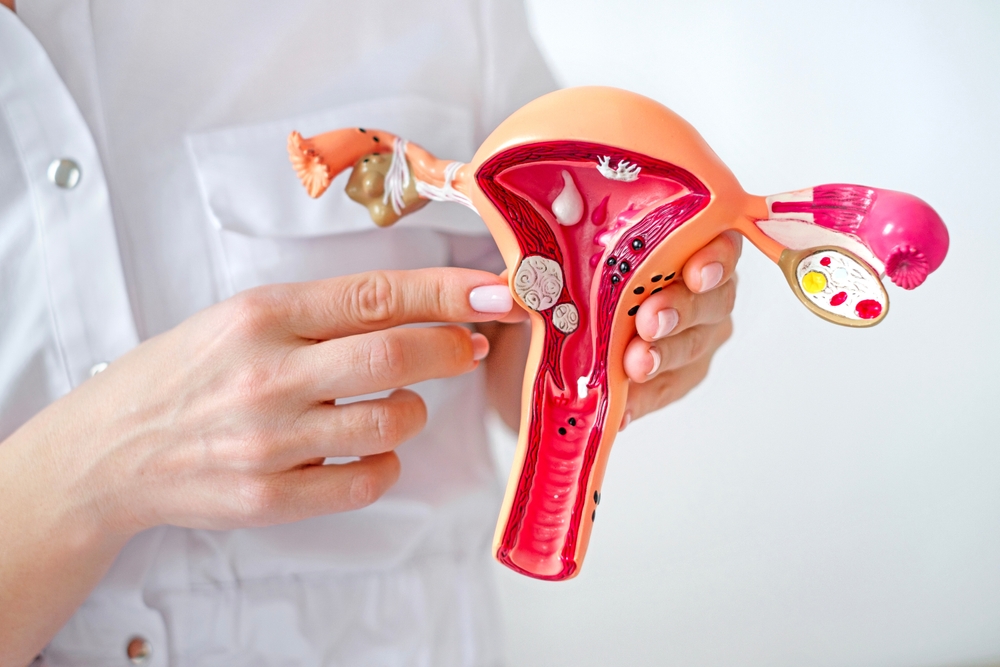
The uterus is a key organ in the female reproductive system, responsible for menstruation, pregnancy, and overall reproductive health. Sometimes, this organ can become enlarged—a condition known as a bulky uterus. Though the term may sound concerning, it isn’t always a sign of something serious. In many cases, it’s caused by common conditions like fibroids, adenomyosis, or hormonal imbalances. However, if left unchecked, a bulky uterus can lead to symptoms such as heavy menstrual bleeding, pelvic pain, and even fertility issues. That’s why it’s important to understand the causes, symptoms, and treatment options associated with this condition. With timely diagnosis and the right medical care, most women can manage a bulky uterus effectively and maintain a healthy reproductive system. If you’re experiencing unusual symptoms or have concerns about your menstrual health, it’s always best to consult a gynecologist for proper evaluation and guidance.
What Is a Bulky Uterus?
A bulky uterus simply refers to an enlarged uterus—larger than the normal size. The typical uterus measures about 7.6 cm long, 4.5 cm wide, and 3 cm thick, about the size of a small pear. However, various medical conditions can cause it to grow beyond its usual dimensions, leading to a “bulky” or “enlarged” uterus.
In some cases, the enlargement is uniform (the whole uterus grows evenly), while in others, it might be due to the presence of masses or structural changes like fibroids.
Is a Bulky Uterus Dangerous?
A bulky uterus is not always dangerous, but the seriousness depends on the underlying cause. For some women, it may not cause any symptoms and is discovered only during a pelvic exam or imaging study.
However, if the enlargement is due to conditions like fibroids, adenomyosis, or endometrial hyperplasia, it might cause:
- Heavy or irregular periods
- Infertility
- Pelvic pain
Ignoring these symptoms can lead to complications, such as anemia (from excessive bleeding), chronic pain, and issues with fertility. That’s why timely diagnosis and treatment are crucial.

Common Symptoms of a Bulky Uterus
The symptoms vary depending on the cause and degree of enlargement. Some women may have no noticeable signs, while others might experience the following:
1. Heavy or Prolonged Menstrual Bleeding
One of the most common symptoms, especially if the cause is fibroids or adenomyosis.
2. Pelvic Pain or Pressure
A bulky uterus can press against surrounding organs like the bladder or bowel, causing a feeling of fullness or discomfort.
3. Frequent Urination
Due to pressure on the bladder.
4. Constipation
Pressure on the rectum can lead to bowel issues.
5. Pain During Intercourse
Also known as dyspareunia, especially if the uterus is tender or enlarged unevenly.
6. Lower Back Pain
Due to the additional weight or pressure from the enlarged uterus.
7. Infertility or Difficulty Conceiving
A bulky uterus, depending on the cause, may interfere with implantation or disrupt the uterine environment.
What Causes a Bulky Uterus?
Several medical conditions can lead to an enlarged or bulky uterus:

Uterine Fibroids (Leiomyomas)
These are non-cancerous tumors of the uterus that can grow large and cause the uterus to enlarge. They are one of the most common causes of a bulky uterus.

Adenomyosis
This occurs when the inner lining of the uterus (endometrium) breaks through the muscular wall (myometrium). It can cause heavy bleeding, pain, and uterine enlargement.

Endometrial Hyperplasia
An overgrowth of the endometrial lining often due to hormonal imbalances, especially too much estrogen.

Polycystic Ovary Syndrome (PCOS)
Chronic hormonal imbalance in PCOS can lead to thickened endometrium and a mildly bulky uterus over time.

Pregnancy or Recent Pregnancy
The uterus naturally enlarges during pregnancy and might remain slightly bulky for some time afterward.

Perimenopause or Menopause
Hormonal fluctuations can affect the size and structure of the uterus in some women during this transitional period.
Diagnosis of a Bulky Uterus
If a woman is experiencing symptoms like heavy periods or pelvic pain, the doctor may conduct the following tests:
1. Pelvic Examination
The doctor can feel an enlarged uterus during a physical exam.
2. Ultrasound (Transabdominal or Transvaginal)
The most common and non-invasive way to measure the size of the uterus and detect fibroids, cysts, or thickened linings.
3. MRI or CT Scan
Advanced imaging may be recommended in complex cases to get a clearer picture.
4. Blood Tests
To check for anemia (due to blood loss), hormone levels, and other indicators.
5. Endometrial Biopsy
If there’s a suspicion of abnormal growth or cancer.
Treatment Options for a Bulky Uterus
Treatment depends on the cause, severity, symptoms, and whether the woman wishes to have children in the future. Here are the common treatment options:

Medication
- Hormonal pills or IUDs (like progesterone or combined oral contraceptives) to control heavy bleeding.
- Gonadotropin-releasing hormone (GnRH) agonists to shrink fibroids.
- Pain relievers for cramping or discomfort.

Minimally Invasive Procedures
- Uterine Artery Embolization (UAE): Blocks blood supply to fibroids, shrinking them.
- Endometrial Ablation: Destroys the uterine lining to reduce bleeding.

Surgical Treatment
- Myomectomy: Removal of fibroids while preserving the uterus.
- Hysterectomy: Complete removal of the uterus—considered in severe cases or when childbearing is no longer desired.
Can a Bulky Uterus Affect Pregnancy?
Yes, depending on the cause. For example:
- Fibroids can interfere with implantation or fetal growth.
- Adenomyosis can increase the risk of miscarriage or preterm labor.
- In mild cases, many women can still conceive and carry a healthy pregnancy with proper monitoring and care.
When Should You See a Doctor?
You should consult a gynecologist if you experience:
- Heavy or prolonged menstrual bleeding
- Pelvic or lower back pain
- Difficulty getting pregnant
- Pain during intercourse
- Frequent urination or constipation without other cause
Conclusion
A bulky uterus is a common condition and not always a cause for alarm. It can result from benign issues like fibroids or hormonal changes but can also indicate more serious problems if left untreated. The good news is that with modern diagnostic tools and treatments—ranging from medications to minimally invasive surgeries—most women can manage the condition effectively and lead healthy, active lives.